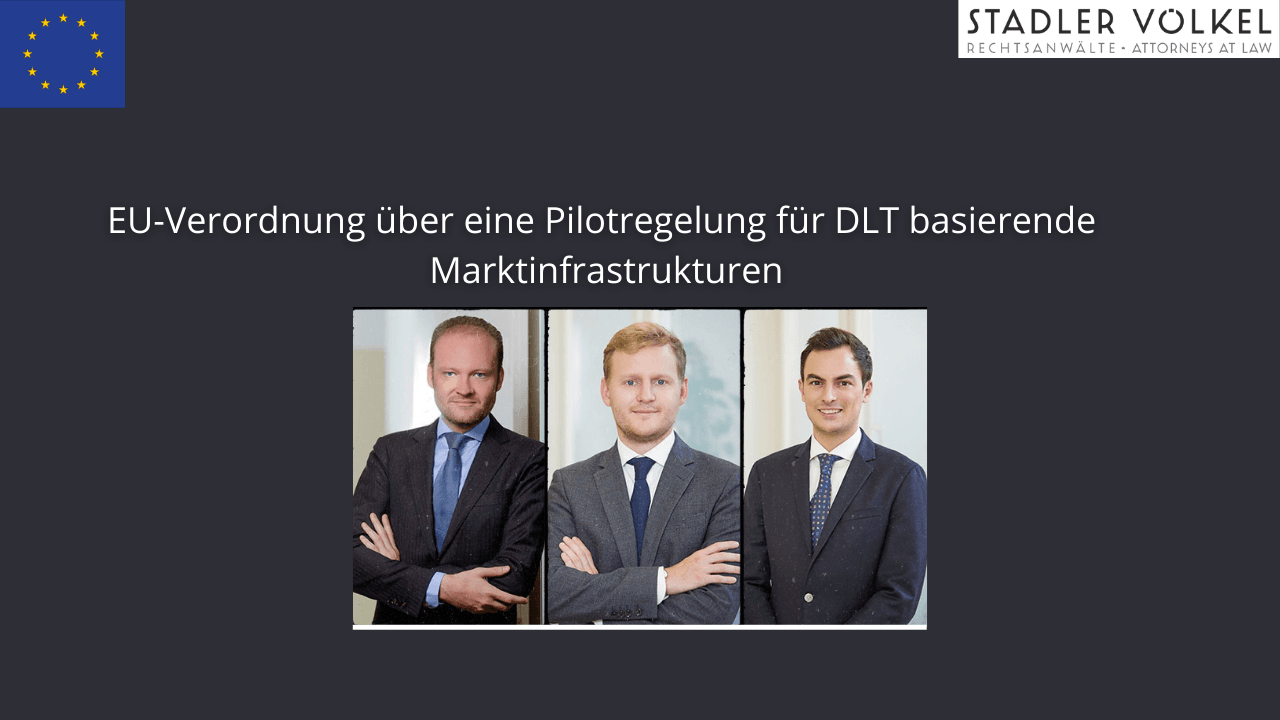
On 2 June 2022, the EU Regulation on a pilot regime for market infrastructures based on distributed ledger technology ('DLT pilot regime') was published in the EU Official Journal. The DLT pilot regime is part of the EU Commission's Digital Finance Package, which consists of strategies and legislative proposals for the digitalisation of financial markets.
The aim of the DLT pilot regime is to create a technology-friendly legal framework for the use of blockchain technology in the financial markets. According to the EU, the DLT pilot regime's intention in particular is to promote the development and introduction of transformative technologies in the financial sector. To achieve this goal, the DLT pilot regime follows a temporary, innovative "regulatory sandbox" concept to provide investment firms, market operators and central securities depositories with a simplified regulatory framework for the trading and settlement of financial instruments within the meaning of MiFID II that are issued, recorded, transferred and stored using DLT ('DLT financial instruments').
The DLT pilot regime has been created against the background that some of the existing regulatory requirements are not compatible with DLT, which so far has prevented the emergence of secondary markets for DLT financial instruments. Other crypto-assets that are not DLT financial instruments are not within the scope of the DLT pilot regime. In the future, these crypto-assets will be covered by the EU Regulation on Markets in Crypto-assets ('MiCAR'), for which the trilogue negotiations have not yet been concluded.
On 23 March 2023, the DLT pilot regime will enter into force and will primarily apply to investment firms, market operators and central securities depositories that have been granted a specific permission under the DLT pilot regime to trade or settle DLT financial instruments. However, the DLT pilot regime is also open to certain FinTechs: they can apply for a specific permission under the DLT pilot regime at the same time as they apply for a licence as an investment firm, market operator or central securities depository.
The DLT pilot regime will initially apply for three years. Afterwards, a decision will be made on the basis of a comprehensive evaluation as to how the DLT pilot regime should be changed or whether it should be extended. In the event of an extension, however, this can be for a maximum period of three years. From the current perspective, it would be a surprise if this important digitisation step did not find its way into financial market regulation on a permanent basis, at least in part.
The DLT pilot regime distinguishes between DLT multilateral trading facilities (DLT MTF) and DLT settlement systems (DLT SS) for DLT market infrastructures. In addition, the DLT pilot regime provides for a DLT trading and settlement system (DLT TSS) that is a DLT MTF or a DLT SS that combines the services provided by a DLT MTF and a DLT SS.
The operation of a DLT MTF allows multilateral trading of DLT financial instruments for retail investors. In particular, it was envisaged as a facilitation that DLT financial instruments do not have to be booked into the securities account of a central securities depository.
The operation of a DLT SS allows the recording and safekeeping of DLT financial instruments. The use of DLT thereby creates the basis for the elimination of intermediaries, which makes the settlement of securities transactions much faster.
A special permission under the DLT pilot regime is valid for a period of up to six years and for the entire EU—provided that the DLT pilot regime will be renewed after three years— without the need for further action by the operator.
Due to the experimental nature of the DLT pilot regime, trading in and booking of DLT financial instruments will be limited to less liquid equities, bonds and UCITS:
In addition, the total market value of DLT financial instruments admitted to trading and/or settlement on a DLT market infrastructure may not exceed EUR 6 billion.
If you have any regulatory questions, are seeking a special permit under the DLT pilot regime or are simply considering whether such a special permit may be appropriate for your business, we would be happy to share our expertise with you.
Oliver Völkel | Lorenz Marek | Andreas Ramprecht